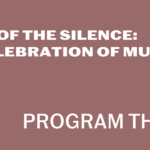Bard Music Festival
Out of the Silence:A Celebration of MusicProgram Three
September 19, 2020
Bard Music Festival
September 19, 2020


Program Three opens with the Adagio trágico by Roque Cordero, who infused twelve-tone writing with the folk rhythms of his native Panama.
In his Four Novelettes, Anglo-African late-Romantic composer Samuel Coleridge-Taylor demonstrates graceful lyricism with a light, balletic touch that is almost reminiscent of Pyotr Ilyich Tchaikovsky, subject of the festival’s 1998 season, whose soulful Serenade for Strings concludes the concert.
The Orchestra Now, conducted by Leon Botstein, Andrés Rivas, and Zachary Schwartzman
Roque Cordero (1917–2008)
Adagio trágico (1955)
Samuel Coleridge-Taylor (1875–1912)
Four Novelettes, Op. 52 (1903)
Allegro moderato
Larghetto
Andante con moto
Allegro molto
Pyotr Ilyich Tchaikovsky (1840–93)
Serenade for Strings, Op. 48 (1880)
Pezzo in forma di sonatina: Andante non troppo—Allegro moderato
Valse: Moderato—Tempo di Valse
Élégie: Larghetto elegiaco
Finale (Tema Russo): Andante—Allegro con spirito